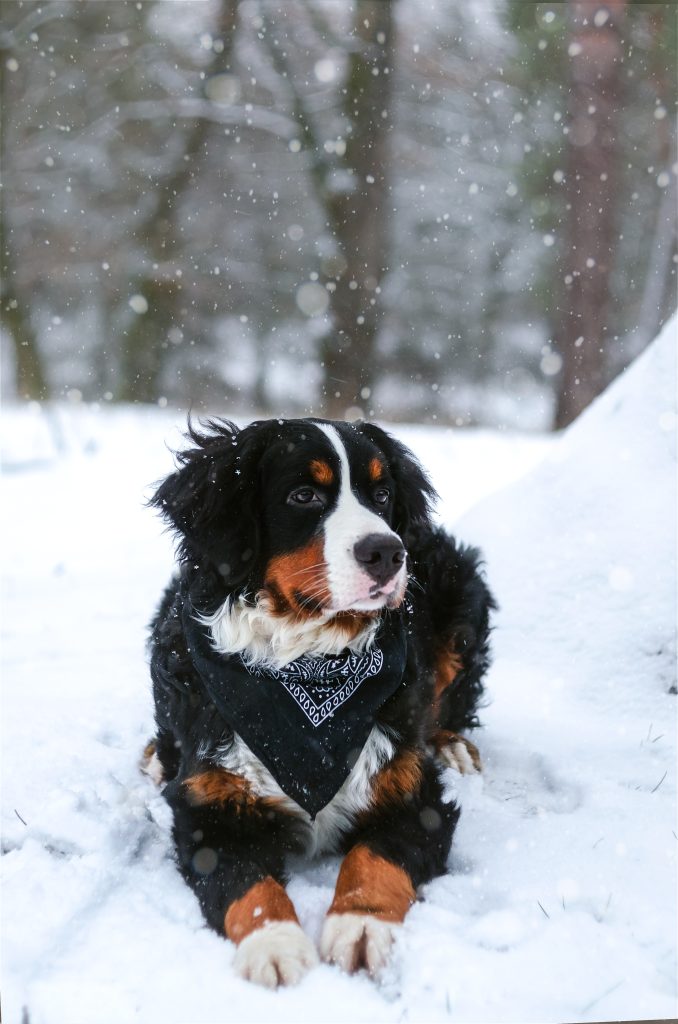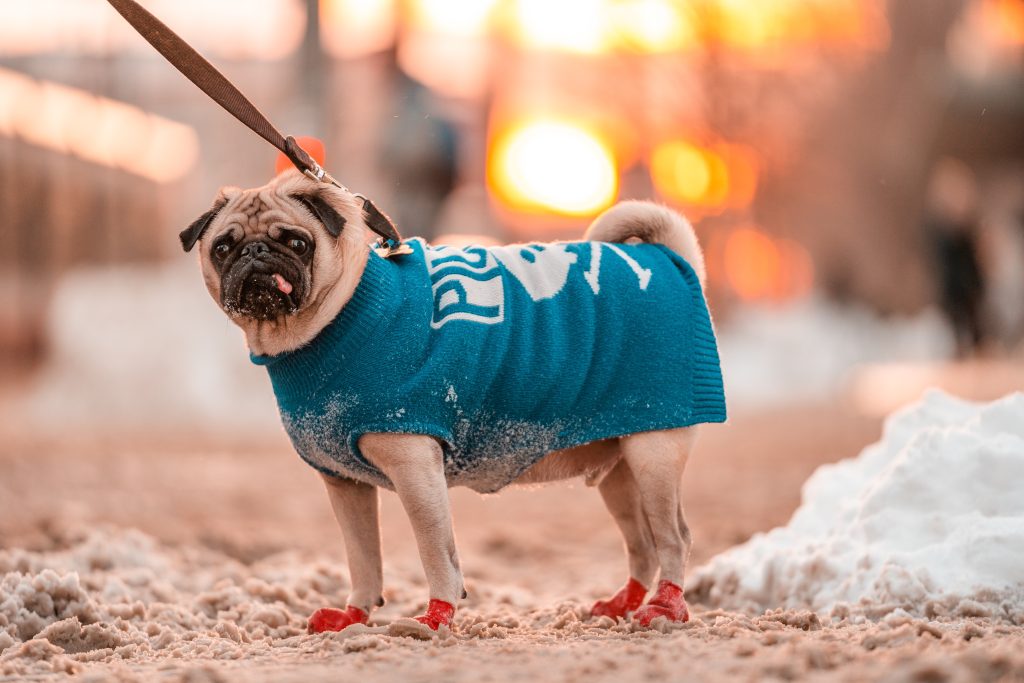Home Remedies and Prevention Tips for Cracked Dog Paws in Winter: Learn how to protect your dogs paws from the harsh winter conditions and treat dryness and cracking using natural remedies and at-home care.

Understanding Cracked Dog Paws
Winter can be tough on our canine companions, and it’s important to understand the common causes of cracked dog paws during this season. Exposure to cold and dry conditions is a major culprit, causing discomfort and potential pain for dogs as they navigate the harsh winter terrain. Winter weather can cause dry or cracked paw pads in dogs. In addition to environmental factors, it’s crucial to be able to identify the signs of dry or cracked paw pads in dogs. This includes paying attention to any limping, excessive licking, or visible cracks on the paw pads, which can indicate the need for intervention to alleviate their discomfort.
Furthermore, it’s essential for pet owners to conduct regular paw pad checks to prevent issues and ensure early intervention. Extreme weather, such as freezing temperatures and dry air, can significantly impact a dog’s paw health, leading to cracking and dryness. By being proactive in monitoring and caring for our dog’s paw pads, we can help them navigate the winter months more comfortably and mitigate the risk of cracked dog paws. For instance, applying protective paw wax or moisturizing balms can be an effective way to provide relief and maintain the overall health of their paw pads.
Prevention and Protection
Prevention is crucial in protecting a dog’s paws during winter, as the cold and dry conditions can have adverse effects on their sensitive paw pads. For example, exposure to salt and dry ground during winter walks can lead to discomfort and potential cracking, making it essential to take proactive measures to prevent these issues.
Using socks or booties can serve as a protective barrier, safeguarding the paws from harsh winter conditions and effectively preventing cracking. For instance, the use of protective gear can significantly minimize the impact of abrasive surfaces, ice, and salt, which can otherwise cause irritation and dryness in a dog’s paw pads. However, it’s important to gradually condition dogs to wear these protective accessories to ensure their comfort and safety during outdoor activities. This can be achieved through positive reinforcement and patience to help the dog acclimate to wearing booties or socks, creating a positive association with these protective items.
In addition to using protective gear, another vital aspect of prevention is limiting the time spent outside in extreme weather to prevent injury to paw pads. For example, during periods of extreme cold or inclement weather, reducing the duration of outdoor activities can help maintain overall paw health and minimize the risk of paw pad issues. By being mindful of the weather conditions and adjusting outdoor activities accordingly, pet owners can effectively protect their dogs from potential paw pad damage during winter.

Natural Remedies for Cracked Dog Paws
When it comes to healing dry and cracked dog paws during winter, natural remedies play a crucial role in providing relief and promoting paw health. Shea butter, known for its moisturizing and anti-inflammatory properties, can help soothe and heal cracked paw pads, providing a protective barrier against harsh winter conditions. For example, gently massaging a small amount of shea butter onto your dog’s paw pads can offer relief and aid in the healing process, ensuring their paws remain resilient and well-protected during winter walks.
In addition to shea butter, coconut oil is another natural remedy that can work wonders in addressing cracked dog paws. Coconut oil contains lauric acid, which has antibacterial and antiviral properties, making it an excellent choice for nourishing and restoring moisture to dry paw pads. For instance, applying a thin layer of coconut oil to your dog’s paw pads before and after outdoor activities can help combat the effects of cold and dry weather, promoting overall paw health and comfort.
Furthermore, vitamin E oil and calendula extract are also valuable natural remedies for treating cracked dog paws. Vitamin E oil is rich in antioxidants and is known for its ability to promote skin healing and repair, making it a beneficial option for addressing dryness and cracking in paw pads. Similarly, calendula extract, derived from marigold flowers, possesses anti-inflammatory and moisturizing properties, which can aid in soothing and rejuvenating your dog’s paw pads, ensuring they remain resilient and healthy during the winter months. By incorporating these natural remedies into your dog’s paw care routine, you can effectively address dryness and cracking while promoting optimal paw health and comfort throughout the winter season.
 At-Home Care and Monitoring
At-Home Care and Monitoring
When it comes to caring for cracked dog paws at home, using moisturizing balms and protective paw wax can play a crucial role in ensuring proper paw care and promoting healing. For instance, applying shea butter or coconut oil to your dog’s paws can help soothe dryness and provide a protective barrier against harsh winter conditions. These natural remedies not only moisturize the paw pads but also aid in restoring their natural resilience, preventing further cracking and discomfort. By incorporating these at-home solutions, pet owners can actively contribute to their dog’s paw health and well-being, promoting a comfortable and pain-free experience for their furry companions.
In addition to utilizing natural remedies, it’s essential to be vigilant for signs that may indicate the need for veterinary attention. For example, if you notice bleeding, limping, or persistent licking of the paws, it’s crucial to seek professional guidance promptly to address any underlying issues and prevent further complications. Regular checks and proactive care for a dog’s paw pads are paramount to prevent issues and maintain overall paw health. By integrating these practices into your routine, you can effectively monitor your dog’s paw condition, identify potential concerns early on, and take appropriate measures to ensure the well-being of your canine companion. Taking a proactive approach to at-home care and monitoring can significantly contribute to the overall comfort and health of your dog, especially during the challenging winter months.

Understanding Paw Pad Hyperkeratosis
Paw pad hyperkeratosis is a common condition that affects many dogs, especially during the winter months. It leads to the thickening and overgrowth of skin on a dog’s paw pads, which can result in dryness and cracking. This condition is often caused by a combination of genetic factors and environmental influences, such as exposure to harsh winter weather and rough outdoor surfaces. For example, dogs that spend a lot of time walking on abrasive surfaces like concrete or gravel may be more prone to developing paw pad hyperkeratosis.
It’s essential for pet owners to be vigilant in identifying the early signs of paw pad hyperkeratosis and to take proactive measures to address it. This may involve using moisturizing balms or ointments specifically designed to soften and hydrate the thickened skin on the paw pads. Regular treatment and care are crucial to managing this condition effectively and ensuring the overall well-being of the dog’s paws. By staying attentive to the signs of paw pad hyperkeratosis and providing the necessary treatment, pet owners can help their dogs maintain healthy and comfortable paw pads throughout the winter and beyond, contributing to their overall quality of life and mobility.
